 Jessica Alba Jessica Alba
Tags: biology, knowledge, race/ethnicity, social construction, subtitles/CC, 00 to 05 mins
Year: 2011 Length: 3:33 Access: YouTube Summary: In this short video from 2011, Jessica Alba appears on the talk show Lopez Tonight and endures George Lopez's comedic preamble before hearing the results of her ancestry DNA test. According to Lopez and the language used by the testing company, Alba is 87 percent European and 13 percent Native American. But to the astute observer, the show is actually claiming to reveal more than the details of Alba's genetic composition. It is also claiming to reveal information about her "true" race, and therein lies the problem. • As I have noted elsewhere on The Sociological Cinema, racial categories do not consistently correspond to biological observations (see here and here). To put it another way, race is not based on biology; it merely claims to be. This point often confuses people, for they reason that in some sense race must be biological. After all, skin color is largely a genetically determined characteristic, and so the thinking goes, race must be too. But while genetic instructions largely determine the amount of melanin a body produces, it is through socialization that people become predisposed to notice skin color as one of the most salient features a body can have. The thickness of one's eyebrows, the shape of their ears, or the color of their of eyes—these are also genetically determined characteristcs, but people mostly discount these features as the bearers of useful information. To socially construct race, then, is to teach people which physical characteristics are the salient markers of a racial group, and racism becomes possible once people begin assigning meanings to those salient racial markers. • At about the 45-second mark, Lopez explains that the DNA analysis distinguishes between four ancestral groups, and perhaps sensing that it would resonate with his audience, he incorrectly equates each ancestral group with a race. The Europeans, according to Lopez, are white, Sub-Saharan Africans are black, East Asians are Asian, and the Indigenous American group refers to Native Americans. The results confuse Alba, who racially identifies as Latina and knows her last name comes from Spain. But it is instructive to dwell a bit on the basis of her confusion, for it highlights the incompatibility between ancestral DNA and race. In the United States people with Spanish heritage tend to be racially categorized as Hispanic or Latino, which is a category believed to be distinct from white. However, DNA analyses show that the original inhabitants of the Iberian Peninsula (i.e. Spain, Portugal, the small UK overseas territory of Gibraltar, and the Principality of Andorra) are a part of the same general migratory group of homo sapiens that settled the rest of Europe. As with all racial categories, contemporary distinctions between whites and Hispanics in the United States are socially created and not based on some deeper biological truth. Submitted By: Lester Andrist 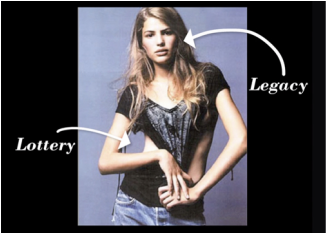 Model Cameron Russell reveals the elusive nature of “the look.” Model Cameron Russell reveals the elusive nature of “the look.”
Tags: bodies, culture, gender, inequality, prejudice/discrimination, race/ethnicity, social construction, beauty culture, floating norms, laissez-faire racism, model industry, white privilege, subtitles/CC, 06 to 10 mins
Year: 2012 Length: 9:30 Access: TEDTalks Summary: Is being a model really all it’s cracked up to be? In this TED Talk, Cameron Russell answers this and other questions by vocalizing some of her experiences in the modeling industry. This video is useful for illustrating the work that takes place behind-the-scenes of the modeling industry in order to produce what sociologist Ashley Mears calls “the look.” In her book Pricing Beauty: The Making of a Fashion Model, Mears articulates that “the look” is something sought after by clients and bookers alike in the fashion industry. It is defined as the varying traits—both physical and personality—that make a model desirable. Yet, after spending more than two years conducting ethnographic fieldwork, Mears finds that industry professionals have a hard time describing what exactly constitutes a good look; rather, they claim they just “know it” when they see it. In this way, Mears illustrates how the look is characterized by a set of “floating norms” against which models are measured. These socially constructed ideals “are elusive benchmarks of fleeting, aesthetic visions of femininity and masculinity” (Mears 2011:92). The challenge with adhering to these norms is that they are consistently out of reach; models must constantly work to achieve them but, since they are ambiguous and always changing, they are ultimately unattainable. The result is that even models are insecure with, and always questioning, the value of their look. • In addition to illustrating the cultural production of the look, this clip also illustrates the various ways white privilege and laissez-faire racism operate in the modeling industry. Once again echoing Mears’s findings, Russell points to the scouting process as a site where ideas about race result in inequalities within the industry. In addition to youth and vitality, Russell asserts that she was also selected for her whiteness. It is both norms around conventional prettiness and the legacy of white privilege that has helped to secure Russell’s success. Mears’s research similarly documents the ways in which white models are significantly hired over African Americans, Latino/as, and people of Asian descent. When models of color are present in the industry, they are often used in exotic campaigns or they exhibit an “ethnicity lite” aesthetic, that is, a look that “blends mainstream white beauty ideals with just a touch of otherness” (Mears 2011:196). • Russell also points to the extensive work that goes into creating a look. Behind each advertisement or photograph is significant makeup and styling, as well as preproduction, postproduction, and Photoshop. How might this create challenges for individuals in society? Many young people seek to emulate “the look” that fashion models project. However, as Mears and Russell demonstrate, the look is unattainable; it is a socially constructed concept that is difficult to describe, and even more difficult to achieve. Nonetheless, people hold themselves up to this impossible standard, resulting in low self-esteem, incredible commercial gains for beauty companies, and a perpetual feeling of insufficiency. Submitted By: Ruth Sheldon and Valerie Chepp 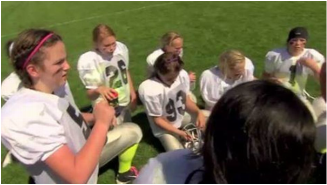 Girls gather for practice in their all-girls tackle football league. Girls gather for practice in their all-girls tackle football league.
Tags: biology, children/youth, gender, social construction, sports, american football, girls, 06 to 10 mins
Year: 2015 Length: 6:45 Access: ESPN Summary: This ESPN video explores the first all-girls tackle football league. They are changing what it means to "play like a girl" and the video shows girls excited to play a physically aggressive sport, which is more traditionally associated with boys and masculinity. But the video does more than challenge gender norms by providing an opportunity to think about the distinctions between sex and gender on shaping the body and body perceptions. Dr. Robert Cantu, Clinical Professor of Neurosurgery and Co-Director of the Center for the Study of Traumatic Encephalopathy, is an outspoken critic of boys (and girls) playing football before high school. He argues that children under the age of 12 that play tackle football have a "significantly greater late life chance to have cognitive problems, depression, and lack of impulse control, compared to the same group of people that started playing football at a later age." He goes on to argue that "young ladies [i.e. girls under 12] have much weaker necks than guys ... so that it takes less of a hit to produce a greater amount of shaking of the brain inside the skull" (the girls wear lighter helmets than those worn by the boys, and the football they use is smaller). But are these differences based in sex or gender? We might consider the degree to which weaker necks are a result of sex-based differences in average neck size and strength, or to what degree girls are socialized to do different types of activities in which they do not build comparable neck muscles? A further implication is that football is more dangerous for girls than boys, which begs the question of how we, as a society react to this claim about different neck sizes. Should we treat girls unequally and disallow them to play a sport that may carry greater risk for them, or should we promote gender equality in giving them equal opportunity to play a sport for which they have great passion? Towards the end of the clip, one of the girls interviewed receives a big hit during a game and "black[s] out." The mother discusses her concern for her daughter, but the young girl says "this is girls tackle football, and I need to toughen up." Submitted By: Paul Dean  Target removes gendered signs and colors. Target removes gendered signs and colors.
Tags: children/youth, consumption/consumerism, gender, social construction, gender binary, 00 to 05 mins
Year: 2015 Length: 2:39 Access: YouTube Summary: This local newscast covers a recent Target store's removal of the "boys" and "girls" sections to go gender-neutral. They note the store is changing the symbolic pink and blue background colors to neutral colors. While in the past, girls played with Barbies and boys played with action figures, Target is transcending these distinctions to enable different toys, electronics, and bedding goods to appeal across gender boundaries. They note their decision to go gender-neutral is based on "customer feedback" and that separate girls and boys sections are "not necessary." Some customers reacted negatively to the switch, stating "Can you say publicity stunt?", "RIDICULOUS!!!", and "No longer a fan or shopper of Target." In effect, these customers are policing the gender binary. One of the news shows' interns praises Target for the move toward "gender equality" and enabling children to "create their own person and not have to choose one thing because that's what they're supposed to choose." For related videos, viewers may want to check out similar debates about a J. Crew advertisement, a 5-year old boy who loves to wear dresses, efforts to make gender-neutral Legos, Fox news analysts that mock gender-neutral bathrooms, and a peer sex educator that breaks down the gender binary. Submitted By: Sanah Jivani 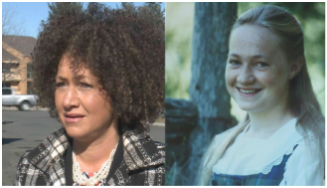 Rachel Dolezal now, and as a teenager. Rachel Dolezal now, and as a teenager.
Tags: bodies, culture, race/ethnicity, social construction, african-american, black, essentialism, privilege, racial identity, transracial, white, 06 to mins
Year: 2015 Length: 10:47 Access: YouTube Summary: Rachel Dolezal sparked a national conversation on racial identity in June 2015 when her black identity was discredited by her white parents. This video is an NBC news interview, in which Dolezal claims "I identify as black" and goes on to defend herself against various criticisms about her racial identity and experiences (including a lawsuit against Howard University, claiming they discriminated against her as a white woman). On the one hand, Rachel Dolezal can be seen as a successful activist that "breathed new life" into her local NAACP chapter as its president (she has since resigned). And some people (both inside and outside the black community) have defended her support for African-American culture, and view criticisms of Dolezal as fracturing the movement for racial justice. However, most commentaries on Dolezal have been highly critical. Jessie Daniels summarized the criticisms in her excellent post, "Rachel Dolezal and the Trouble with White Womanhood." Specifically, Dolezal's attempt to pass as a black woman has taken away resources (i.e. a full scholarship to Howard University) reserved for African-Americans, she has allegedly stolen the stories of African-American (and Native American) oppression and experience and presented them as her own, her white skin has helped her benefit from colorism and white privilege (i.e. a visibly black person would not be permitted to pass as white), and that such claims reflect bell hooks' notion of "eating the other." Her case has also sparked a controversy about her claim of a transracial identity, which has long been applied to adoptees whose race did not match that of their parents. First, this claim of a transracial identity has been criticized by transracial adoptees, who argue that “We find the misuse of ‘transracial,’ describing the phenomenon of a white woman assuming perceived markers of ‘blackness’ in order to pass as ‘black,’ to be erroneous, ahistorical, and dangerous.” Second, numerous conservative pundits jumped on the notion of "transracial" as being the same as transgender, in order to critique and discount both identities. But as Daniels and other scholars and activists have pointed out, the two identities are uniquely different. Carla Kaplan shed light on another dimension of black identity that, upon first glance, seems to be shared with Dolezal. Kaplan noted that, in the 1920s, the term "Voluntary Negro" was used to describe light-skinned blacks who looked white and chose to identify as black. The key point here is that the term was not intended for whites and was meant to honor African-Americans whose ancestry was shaped by racism (unlike that experienced by Dolezal), and that while they could "pass" as white, they chose to embrace their black identity out of racial solidarity. Kaplan went on to acknowledge that a "fervent social constructionist" view might logically enable such a fluid racial identity, but that she would still be culturally wrong in doing so. Submitted By: Paul Dean 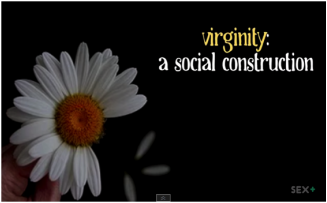 "Virginity” powerfully shapes and controls people’s lives. "Virginity” powerfully shapes and controls people’s lives.
Tags: gender, sex/sexuality, social construction, heterosexism, sexism, virginity, subtitles/CC, 00 to 05 mins
Year: 2013 Length: 4:59 Access: YouTube Summary: In this video, Laci Green, a peer sex educator and YouTube blogger, tackles the issue of virginity and illustrates how past social norms contribute to contemporary ones. Green starts out by establishing the concept of "virginity" as a social construct—that is, the definition of virginity changes over time and across cultures. For instance, the definition of virginity is rather unclear. As Green explains, virginity can be hard to define with same sex partners, or in the absence of vaginal intercourse. So, what is virginity? Well, Green says it started in the Neolithic Period, back when there was no birth control and male-bodied people controlled most of the resources. There was a problem with establishing paternity if a female-bodied person had slept with more that one person. So, virginity was the answer. In order for a young female person to be eligible for marriage she must have been "pure" and virgin. There was also a financial element tied to this. In exchange for a virgin daughter, a father was paid material goods from the husband-to-be. Green highlights remnants of these early social practices in contemporary societies. For example, in honor-based societies, women who lose their virginity out of wedlock are often subjected to beatings and death for dishonoring their families with their "impurity." In other societies, fathers "give away" their white clad daughters at weddings, the white dresses being a symbol of virginity and purity. Importantly, Green acknowledges that, just because virginity is a social construct, doesn’t mean that it’s not "real." Virginity affects people’s material lives and values in many ways. The concept of virginity has a lot of power and shapes many aspects of people’s lived experiences, from controlling their sexualities to promoting heterosexism. Green suggests that we try to take away the power of the term virginity, and call the experience a "sexual debut" instead. For more of Laci Green’s peer sex ed and social justice videos, check out her YouTube channel or another post on The Sociological Cinema featuring one of her videos. Submitted By: Abigail Adelsheim-Marshall 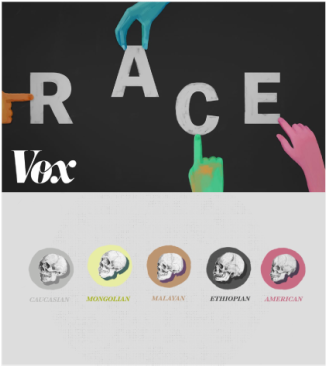 Vox debunks the race myth in a new video Vox debunks the race myth in a new video
Tags: biology, immigration/citizenship, inequality, knowledge, prejudice/discrimination, race/ethnicity, science/technology, social construction, caucasian, mexican, racial formations, scientific racism, subtitles/CC, 00 to 05 mins
Year: 2015 Length: 3:08 Access: YouTube; Vox Summary: It often surprises students to learn that sociologists and other social scientists regard race as little more than a creation of the collective imagination, or as the above video from Vox argues, race isn't real. Contrary to popular belief, racial categories do not consistently correspond to biological observations; nor are the racial categories used today a particularly ancient means of categorizing human societies. They are, in fact, both flimsy and recent. • The social theorist David Theo Goldberg argues that starting in the sixteenth century racial thinking and racist articulation became increasingly common in European societites. As Vox explains in the above video, one crucial moment of racist articulation appears to have occurred nearly two centuries later when in 1779 German scientist Johan Friedrich Blumenbach is credited with attempting to establish a scientific, race-based system of classification. Although his work has long been discredited, it is worth noting that he arrived at five hierarchically organized racial categories: "Caucasian, the white race; Mongolian, the yellow race; Malayan, the brown race, Ethiopian, the black race, and American, the red race." Not surprisingly, he ranked Caucasians highest on his racial hierarchy. • For those who remain unimpressed by the fact that racial thinking is a relatively recent phenomenon in human history, consider the fact that racial categories and their hierarchical arrangement have been shown to change with political priorities. In academic parlance, racial formations have continued to be created, transformed, and destroyed. For instance, the video explains that the U.S. Census categorized people with Mexican ancestry as white until 1930, at which point the Census began categorizing these whites as an emergent racial category known simply as "Mexican." The change in Census categories reflected a developing racial discourse in the American Southwest but it also played a role in temporarily limiting immigration from Mexico, and fewer immigrants from Mexico meant higher wages for whites. • Properly contextualized, the reason for the emergence of racial thinking in Western Europe seems fairly clear. Although it is assumed race is based on natural, biological differences, the truth is that racial thinking has had very little to do with accurately describing natural variation in human populations and far more to do with whites maintaining power, privilege, and resources at the expense of nonwhites. Although race isn't real in a biological sense, as the video explains, it has become hugely important in a social sense. The racial categories to which we're assigned can determine real life experiences. Submitted By: Lester Andrist 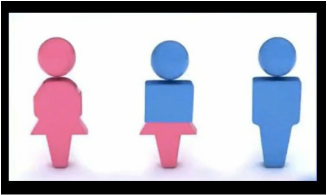 ISU adds gender-neutral labels to its restrooms ISU adds gender-neutral labels to its restrooms Tags: crime/law/deviance, gender, inequality, knowledge, lgbtq, media, prejudice/discrimination, sex/sexuality, social construction, agender, androgyne, bigender, gender fluid, genderqueer, neutrois, non-binary, trans*, transgender, 00 to 05 mins Year: 2014 Length: 0:50 Access: Mediaite Summary: In this clip from Fox & Friends Heather Nauert reports that Illinois State University recently relabeled its "family” restrooms as "gender-neutral." She kicks off the segment by saying,"Someone call the P.C. police!" and warns that viewers are "not going to believe this one.” The giddy laughter of her off-camera colleagues is audible while she delivers her exasperated explanation of the new restroom symbols. The video is useful in any class wrestling with the social construction of gender, the gender binary, and consequences of rigidly enforced gender categories. People who identify as transgender, two spirit, demiguy, demigirl, bigender, non-binary, trigender, third gender, genderqueer, gender fluid, androgyne, neutrois, and agender (and others) have often reported instances of ridicule and danger faced when using public restrooms. For this group, the labeling change means the difference between being able to safely use public restrooms at their university. What is interesting is not the change toward more inclusive signage at Illinois State University, but how Fox & Friends uses their platform as a major news network to actively police the gender binary. Nauert begins by framing the change as an instance of political correctness, a term that suggests the new signs are of trivial importance. The demeanor of both newscaster and her off-camera colleagues is another cue that viewers should not regard the change as an important or positive development at Illinois State University. Although times are changing, news programs still give lip service to the idea that their job is simply to give the public impartial (i.e., fair and balanced) information about important events. What is discussed less is the role the media plays in shaping the public's understanding of those events and reconstituting the state of affairs where excluding people who do not conform to the gender binary is acceptable. For more information about bathrooms as a site of gender politics, check out our Pinterest board on the topic. Submitted By: Lester Andrist 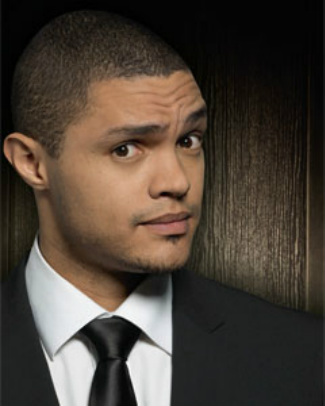 Trevor Noah describes his experience being multiracial. Trevor Noah describes his experience being multiracial. Tags: crime/law/deviance, multiculturalism, race/ethnicity, social construction, apartheid, multiracial identity, racism, stigma, 06 to 10 mins Year: 2013 Length: 8:02 Access: YouTube Summary: This clip features a set from stand-up comedian Trevor Noah's show at the Apollo Theatre in London. In his humorous commentary, Noah illustrates how meanings ascribed to race are socially constructed, and how social mechanisms--such as laws--function to create, reproduce, and reinforce socially ascribed meanings of race. Noah begins by talking about his experience growing up under apartheid, the South African law that made it illegal for white and black people to interact. Born to a black mother and white father, Noah recounts the legal consequences his parents faced for their relationship (with Noah as the evidence of that relationship and thus a liability for his parents in public). Noah also addresses the stigma he felt as a result of these very real legal dangers, offering a particularly compelling description of what the stigma felt like: "It was horrible. I felt like a bag of weed" (when his parents had to "drop" him any time authorities or would-be snitches came by). Growing up, Noah was also teased by others and called derogatory names like "mixed breed" and "half caste." Noah reflects on these names: "I hate that term 'half'. Why not 'double'?" Noah's critique highlights a common conceptualization of race, the presumption being that mixed race constitutes some form of dilution. Viewers are encouraged to take Noah's question seriously: Why is the notion of mixed race so often depicted as a "thinning" or "watering down" of some sort? Why aren't multiracial identities described as an augmentation? Pushed further, why are they presumed to constitute some type of meaningful transformation in the first place (i.e., "half" or "double")? What are the implications of such presumptions? As Noah continues to describe his own story and racialization experience, he further illustrates another dimension of the social construction of race, as race takes on different meaning in different social contexts. In South Africa, Noah longed to be considered black. He was told that, in America, people would think of him as black, as any (known) African ancestry tends to constitute "blackness" in the United States. Of course, this American racialized phenomenon has its own long legal history in the so-called "one-drop rule." Yet, upon arrival in the U.S. and much to his bewilderment, Noah is mistaken for Mexican. Here, viewers can see how race means different things in different contexts: In South Africa, Noah wanted to be "more black." In the U.S., he was told that he'd be "super black." Noah studied performances of American blackness in hopes of acquiring this super black status. However, upon arrival, Noah was deemed neither American black nor multiracial South African. Instead, he was perceived to be Mexican. The clip usefully illustrates some of the fluidity, complexity, and consequences of different racial formation systems. Submitted By: Margaret Austin Smith 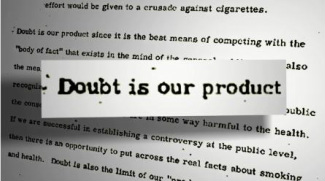 Doubt shapes discourses of science and power. Doubt shapes discourses of science and power. Tags: discourse/language, environment, foucault, health/medicine, knowledge, science/technology, social construction, climate change, creationism, evolution, tobacco, 00 to 05 mins Year: 2012 Length: 5:12 Access: YouTube Summary: This video from The Climate Reality Project entitled "Doubt" illustrates how knowledge and power are tightly interwoven. Using two case studies—the "tobacco is good for you campaign" and the "climate change denial movement"—the clip depicts how science can be used as a mechanism of legitimation by powerful others in ways that best serves status quo interests. Michel Foucault discussed this phenomenon in his extensive work on how the discourse of science (and knowledge) is also a discourse of power. As illustrated in the video, despite the scientific evidence showing tobacco's deadly effects and climate change's dangerous outcomes, powerful interests suppressed this knowledge by introducing doubt into the discourse around tobacco use and climate change, which they backed up using a discourse of science. These powerful interests created the illusion that a scientific debate was taking place when, in reality, there wasn't. An iteration of this phenomenon recently unfolded in the media-hyped debate between Bill "the Science Guy" Nye and creationist Ken Ham. Here, the case of evolution was presented as a scientific debate, thereby suggesting that a lack of consensus surrounds the scientific evidence around evolution. This tactic of using a discourse of science to create the illusion of uncertainty around evolution was echoed by Michael Schulson in his article for The Daily Beast, in which he writes: "Ham’s argument, essentially, was that there are two kinds of science—observational, concerned-only-with-what-we-can-touch-and-see science, on which, Ham said, we all happily agree; and historical science, on which we don’t. This is bullshit, of course. We can use evidence from the present to extrapolate about the past." Yet, like the case of tobacco and climate change, by creating doubt about the earth's origins, the public's access to scientific knowledge is suppressed. This video would complement a discussion around the sociology of knowledge, science, and power, and would pair well with portions of the This American Life radio episode, "Fake Science," and with sociologist Zuleyka Zevallos's article, "The Sociology of Why People Don’t Believe Science." Viewers can be encouraged to think about: Whose interests are served in each of the fake science cases of tobacco, climate change, and evolution? What is the role of the media in perpetuating fake science? How has fake science shaped social policy? Other videos from The Climate Change Project can be found here. Submitted By: Valerie Chepp |
Tags
All
.
Got any videos?
Are you finding useful videos for your classes? Do you have good videos you use in your own classes? Please consider submitting your videos here and helping us build our database!
|
 RSS Feed
RSS Feed
